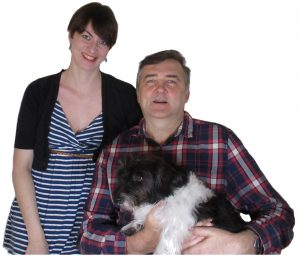Presenting The Brickworms: Ralf, Gel and Raudi
The Brickworms was founded by Geraldine (Gel) and Ralf J. Klumb in Berlin in November 2017. The name borrows from the couple’s first company, the translation office The Wordworms. The original concept of distributing products by the American manufacturer of accessories for LEGO®, Brickstuff, throughout the EU, has not yet been realised for various reasons. Instead, the passionate LEGO® fans – also called AFOL (adult fans of LEGO) – collated the bricks required to build models based on the instructions presented in various books and to offer them as kits.
At the same time, they introduced their first batch of self-developed models or so-called MOCs (my own creations). These are offered including instructions, but the instructions can be bought separately if desired. Then the customer faces the challenge of sourcing the bricks required to build the model him/herself.
Ralf will kick things off with an interesting story of how his life has always been connected to the brick patented way back in 1958. Then, Gel will take over with her memories of LEGO®. The third team member was, until 15th May 2022, our dog Raudi, who also loved LEGO® in his own way.
The list of people involved in this venture will undoubtedly expand over time. Today, however, in May 2022, we still cannot reveal any more.
Happy reading!
Ralf’s story
My story is closely linked to LEGO®. After reading it, you won’t be at all surprised about this new adventure we are now embarking on – or we simply have to embark on.
It started with… a book? a movie? my mother?
“It is in fact difficult to pinpoint a specific time in my life when I had my first encounter with LEGO®. Maybe it was around the age of 3, when I received my first LEGO® model of a car, the kit no. 315 named European Taxi. It was first presented by the Danish toy manufacturer in 1963. This car has survived to this day and is standing here in my office right now in 2019.
A few years ago, I actually purchased a second model of this car, which I then donated to Stockholm’s Toy Museum while we lived there. If you are in that part of the world, go and have a look at the fantastic collection of LEGO® and other toys the small bunch of volunteers have put together. And say hello to Paula from me.
A book?
However, back to the headline. Yes, it was indeed a book that led to the existence of The Brickworms. As a translator, I was given the task in the summer of 2017 to translate Peter Blackert’s book How to Build Brick Cars into German, my mother tongue. It was to be my first book translation, after almost 15 years in this industry. Somewhere along the line I did translate something in connection with LEGO® – but that’s a while ago. I thoroughly enjoyed translating this book, and once my part was finished, I thought I’d build at least the first model described in the book, the Ford Coupé and Roadster. Just for fun, as a little reminder of the fun task.
When sourcing the parts on BrickLink, I soon realised that it was quite tricky trying to get as many parts from as few sellers as possible. Yes, you’ve already guessed it: I then started to search for the parts of the second car, the Ferrari 488, and then the third, and so on. Eventually I had all 12 cars in my office, spent a lot of time and money – no, I never added the invoices up, but I possibly spent all the money earned from the translation on LEGO® parts. Around 5,500 of them. Before I started, I had the old car from 1963 with its 48 parts, and a few other bits collected over the last few years, since…
The LEGO® Movie!
In 2014, while living in Leeds in Yorkshire, England, my wonderful wife (and partner in this venture) and I went to the cinema to see the new movie based around Emmet, the construction worker in Bricksburg, setting out to prevent all the bricks from being glued together so they couldn’t be changed anymore in a creative way. Inspired by the movie, we started buying the surprise packs of minifigs available at the time. It didn’t take long before we had all 16 figures, impressed by how the sales assistants in the LEGO® store were able to feel the content in the bags – correct all the time! Okay, so we had the figures, standing there, collecting dust. What now?
We bought some of the themed sets, too, but still the figures seemed a bit lost. So I decided to build them a home. After a bit of planning with the help of some software unknown to me before then, I came up with a display case including LED lights.
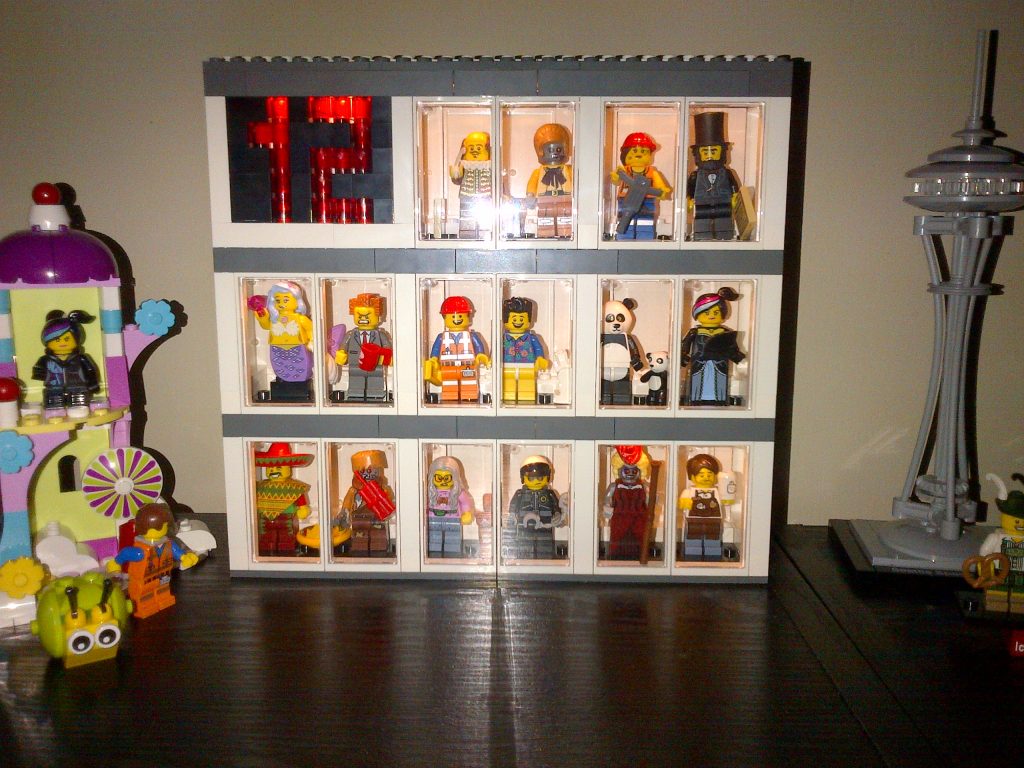
While I got the bricks, plates and panels online from LEGO® (at that time I hadn’t heard of BrickLink yet, so it wasn’t cheap), I came across the lights at an American company called Brickstuff. Quickly the owner of Brickstuff, Rob Klingberg, and I established a good rapport and we have stayed in touch since then, exchanging thoughts on ideas, language solutions, some translation work and potential expansion to Europe.
At around that time, we also purchased our first set from the Architecture series, the Seattle Space Needle, inspired by our love for the TV series Grey’s Anatomy.
A brilliant product (not only in our view) is the game Creationary by LEGO®. Somehow this found its way into our household, too, and we love playing it, and so do our guests. Have you ever heard of the saying ‘You can never have enough LEGO®!’? Well, it’s true! And if it’s only one item you want to have in your home, make it this one!
Now, what has
my mother
got to do with it all? As I mentioned earlier, my mother tongue is German. However, my mother isn’t German at all, she is Danish! One of those twists of language, I suppose. My mother moved to a little village near Billund, the home of LEGO®, just after World War II. She, her younger brother and their parents had endured the German occupation on the island of Bornholm, which was and is part of Denmark. My mother recalls having visited the family of Ole Kirk Christiansen, the founder of LEGO® in the 1930s, at their home in Billund. She also remembers travelling to school together with Ole’s youngest daughter Ulla by train to Grindsted. And this was all way before 1958, when the LEGO® brick we all know so well was patented!
Whether this early contact with the family of Ole influenced my parents’ introduction to LEGO® I can’t say, but the fact is that we seemed to have quite a lot of LEGO® in our childhood home. According to my mother, those bricks are still somewhere in their house. Once I am able to track them down, I will try and build as many of our old models as possible and place pictures on this website. Here are a few photos from my first photo albums, dating as far back as 1967.
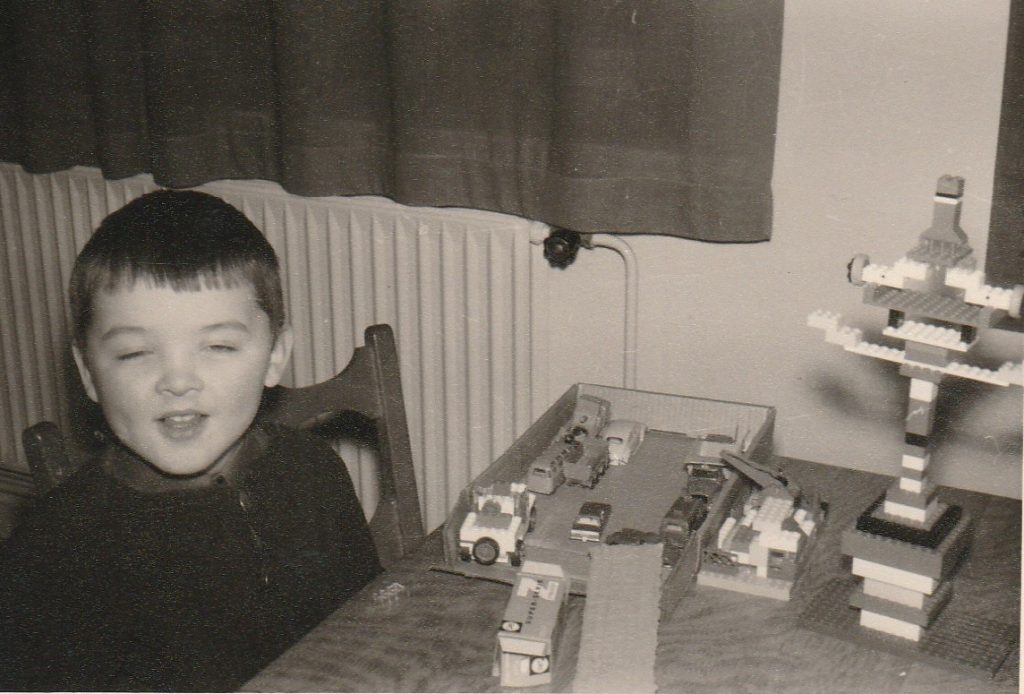 Happy little Ralf in 1967 with a selection of our first LEGO® kits.
Happy little Ralf in 1967 with a selection of our first LEGO® kits.
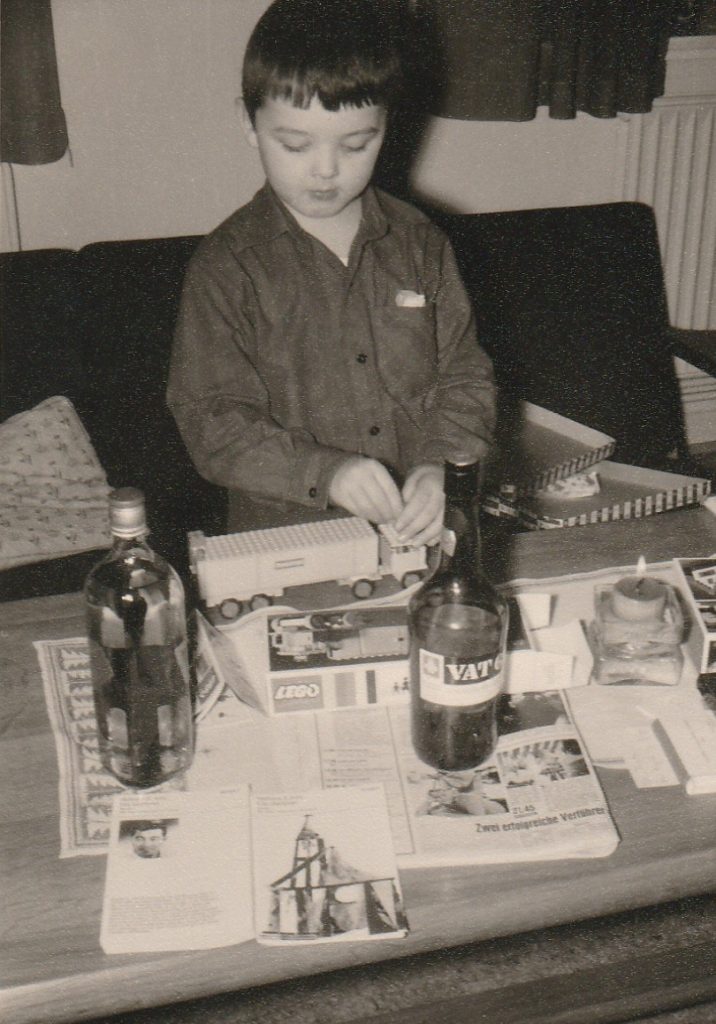 This looks like Christmas 1967, driving the big new truck no. 335. And no, those bottles weren’t mine.
This looks like Christmas 1967, driving the big new truck no. 335. And no, those bottles weren’t mine.
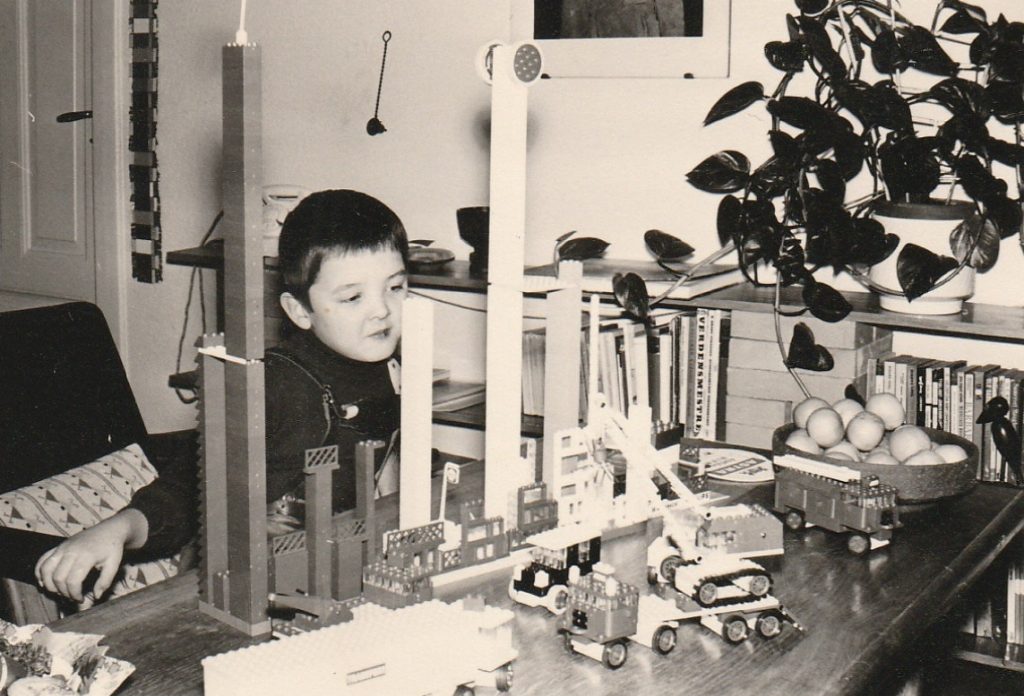 Still 1967, this time showing off not only a lot of red and white bricks, but also various vehicles, among them the black taxi from 1963.
Still 1967, this time showing off not only a lot of red and white bricks, but also various vehicles, among them the black taxi from 1963.
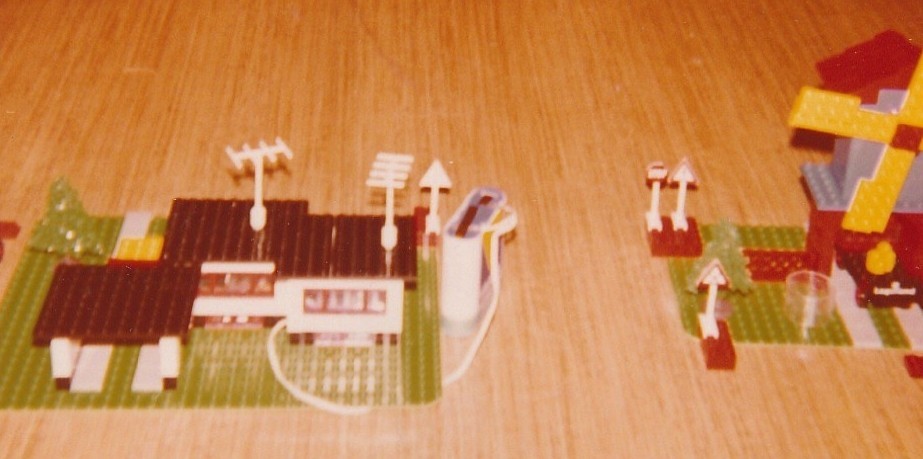 Clearly the path to the potential co-operation with Brickstuff was laid back in the early 1970s! LEDs were a long way off, so the large 4.5 V battery powered a lightbulb inside the house.
Clearly the path to the potential co-operation with Brickstuff was laid back in the early 1970s! LEDs were a long way off, so the large 4.5 V battery powered a lightbulb inside the house.
 In summer 1972 we had created these builds while on holiday at my grandparents’ in northern Denmark, but due to limited space in the car, we had to dismantle them. The aim of these photos was to be able to re-assemble them once back at home in Germany. I cannot recall if we ever did rebuild them though.
In summer 1972 we had created these builds while on holiday at my grandparents’ in northern Denmark, but due to limited space in the car, we had to dismantle them. The aim of these photos was to be able to re-assemble them once back at home in Germany. I cannot recall if we ever did rebuild them though.
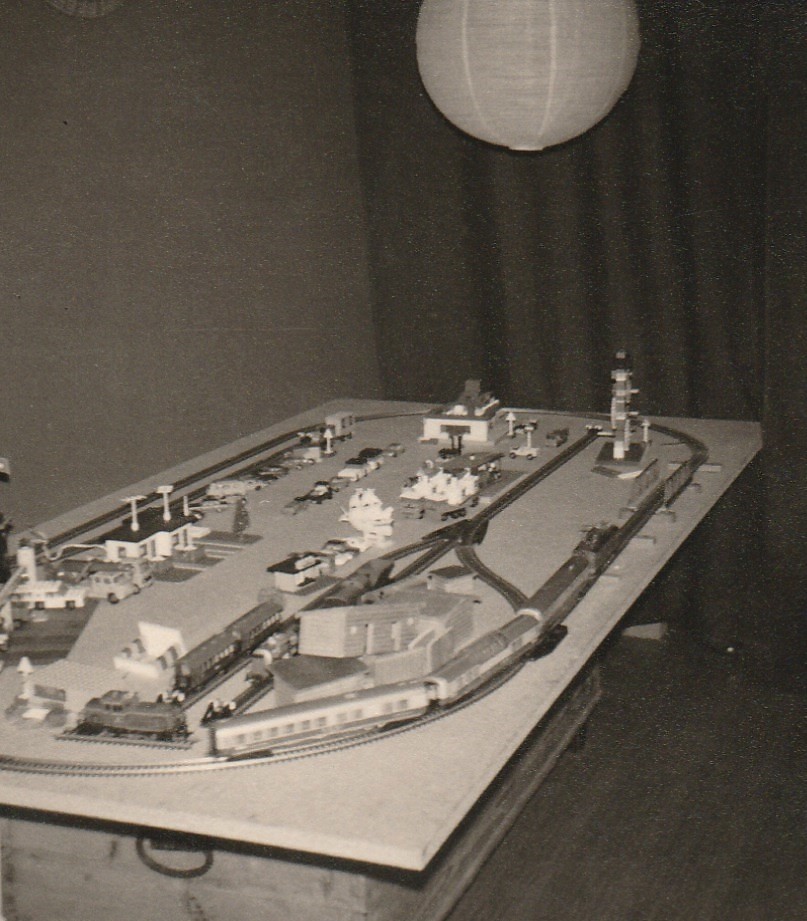 LEGO®, Märklin, Siku, Matchbox, even some wooden buildings – all in unity. Those were the days when we mixed the products of these brands together and played happily for hours.
LEGO®, Märklin, Siku, Matchbox, even some wooden buildings – all in unity. Those were the days when we mixed the products of these brands together and played happily for hours.
The happy times with LEGO® products carried on for years. The early to mid-1970s saw the appearance of the cogs and wheels in red, blue and yellow. I distinctly remember Christmas 1977, when basically my only present was the brand-new Technic kit 853 – the large car chassis and biggest Technic kit so far! I spent all night after having received my gift (in Germany we don’t have to wait till the morning of Christmas Day) in our hobby room in the cellar, first following the instructions, but then quickly changing to my own creations since I noticed that the gearbox didn’t really work. Soon after that I learnt what a differential was, so I created my own long before LEGO® launched one. Once LEGO® had introduced them on one of the later large car models, I bought three of them and moved on to building cars with motorised four-wheel-drive, four-wheel-steering and even suspension; again my own creation with springs bought from an agricultural workshop in our village, long before LEGO® presented their own solution.
Who knows, had some points in my life been set to another track, maybe I would have had a career like Peter Blackert, who basically did the same in his childhood and teens and eventually landed a job as an engineer at Ford Australia. Sometime over the last few years, I read an article in a Danish newspaper about the 60th birthday of the LEGO® patent. Here the author, Martin Mikkelsen, quotes Jørn Martin Steenhold, a Danish toy researcher who used to work for LEGO® in the 1990s, saying that while younger children up to the age of seven prefer to build freely, only 5 to 10 percent of older children actually choose to build their own creations. And they are the ones who are most innovative. Peter Blackert is one of them, and so is the architect of the new LEGO® House in Billund, Bjarke Ingels, which opened in September 2017 as a museum and presentation of all things LEGO®. And this is what The LEGO® Movie wanted to express and encourage: more creativity, more innovation. With LEGO®, there are no boundaries to your creativity! Unless you turn 100 years old.
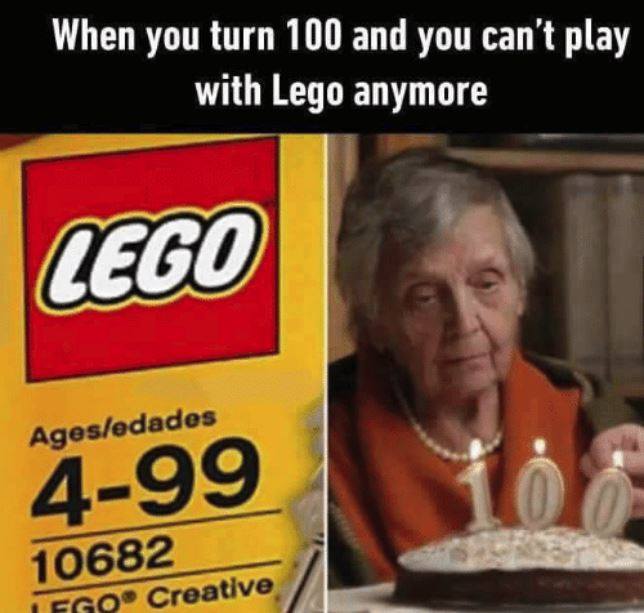
Just joking – LEGO® has led to positive effects in old people’s homes and for people with health-related issues, like former soldiers suffering from PTSD.
What I want to say is: we are venturing on a new path, expanding our portfolio. And we are excited to offer you a fantastic product range, beginning with subject-related books, providing inspiration for your creativity. Bags of bricks will enable you to build the models in those books. Our own creations make up another section, and, sometime soon, the range from Brickstuff is planned to find its way on to our website! So we hope to hear from you and possibly see you at our stand, once we start presenting our products at LEGO®-related events in various places! Happy building!”
Gel’s story
So, that was Ralf’s story. LEGO® wasn’t unknown to Gel in her childhood either. Here she tells us what made her launch The Brickworms with Ralf.
It started with a castle
“My earliest memory of LEGO® is playing with my brothers’ old Castle set (which was probably no. 6073 as I remember my favourite bits were the horses and plumes in the minifigures’ helmets and the Black Falcon shields look very familiar to me).
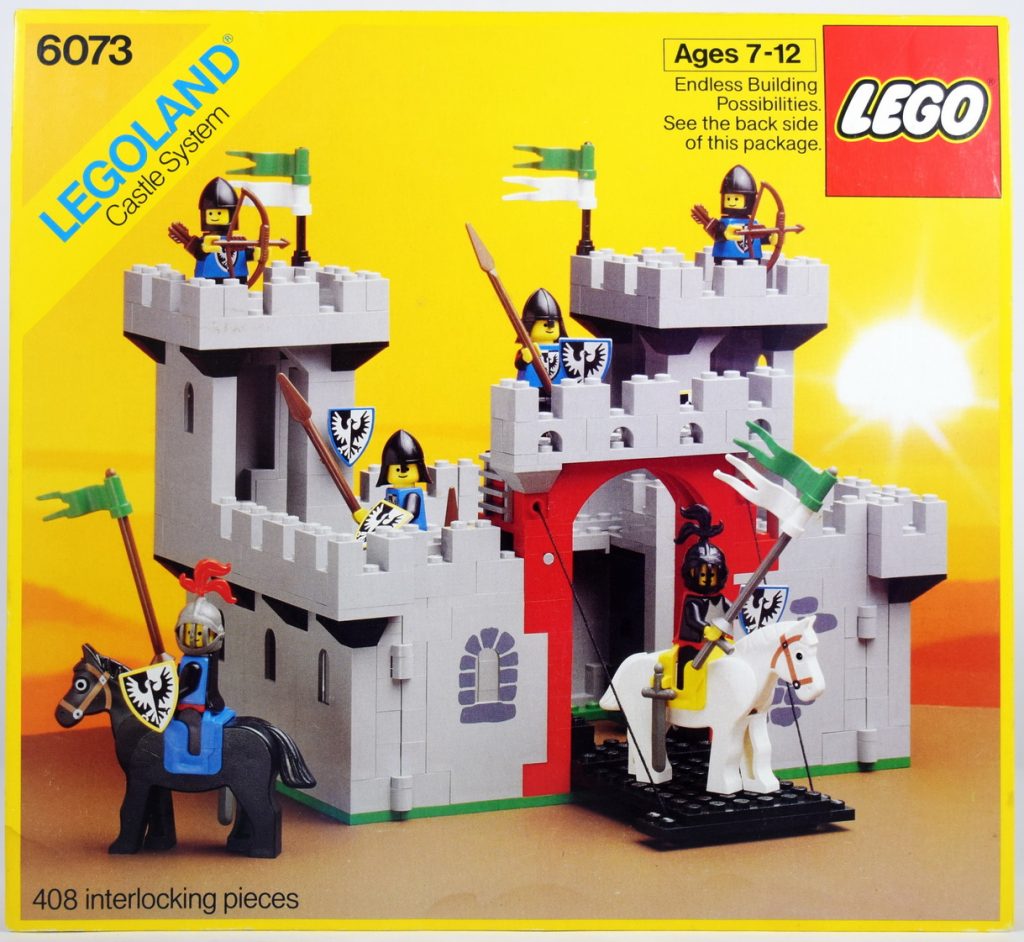
Outside of some Duplo sets (such as no. 1021 and no. 2770), I didn’t actually have any LEGO® of my own because I was more of a Barbie girl in those days! The lines introduced to appeal to little girls (namely Friends, Disney and Elves) didn’t yet exist. If they had, I would definitely have been a big fan of LEGO® growing up.
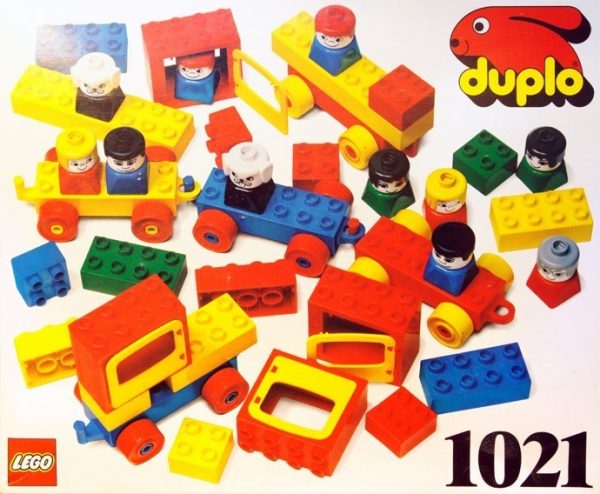
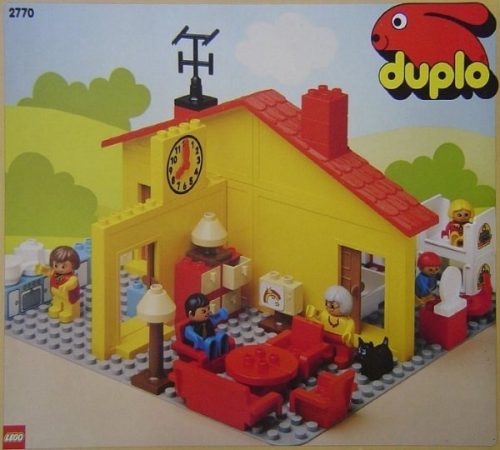
© 1986 LEGO Group
Like Ralf, though, I have returned to Lego only recently. The Lego Movie was the main catalyst for this. I thought it was fantastic fun and it inspired me for the first time to think of LEGO® as a toy suitable for adults as well as kids. To embrace my inner child.
It was around that time that Ralf started buying the odd minifig to accompany themes in our lives; for example, the Seattle Space Needle (no. 21003) and surgeon minifig (no. col06-11) to capture our passion for the Grey’s Anatomy series that he has mentioned above.
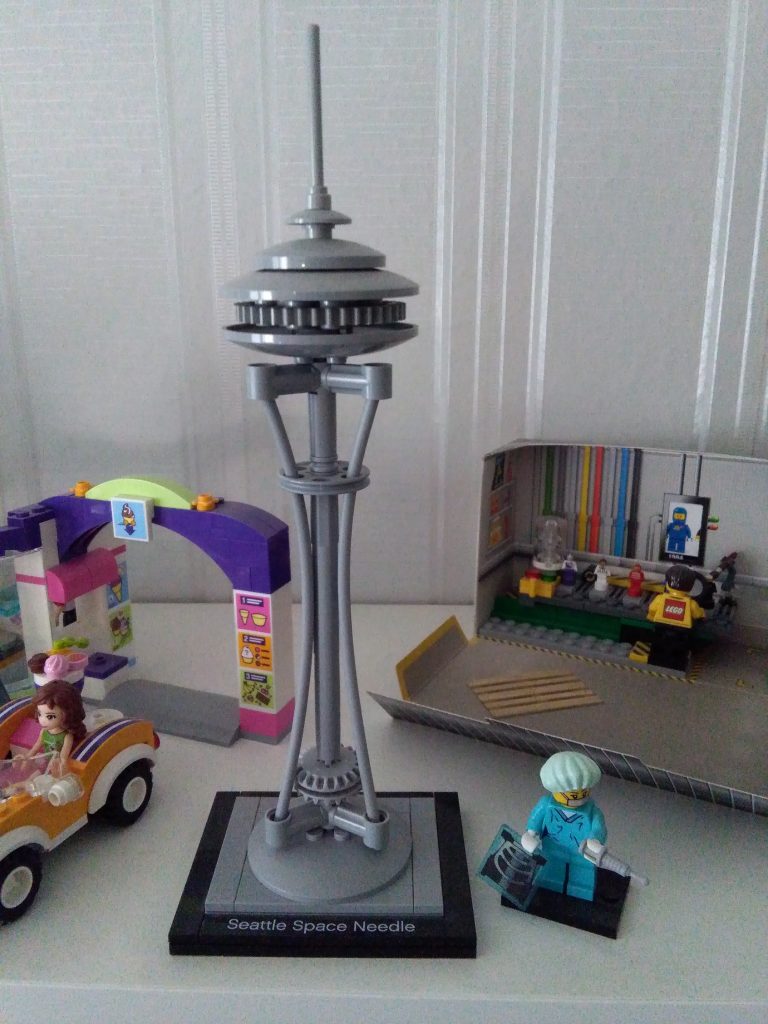
What really appeals to me about LEGO® is its limitless applications. The range of LEGO® parts and colours available now is simply astonishing. I am slowly getting to know them and how they can be used to fit together, but it might be a long while before I feel confident enough to design my own creations and share them with you.
My favourite themes are Friends, Disney, Harry Potter and Minifigures.”
So, that was Gel. I, Ralf, am looking forward to Gel’s creations. I doubt that we will have to wait very long 😉
Real meets fake
Let’s not forget our current third team member: Raudi! He is our specialist when it comes to recycling all the cardboard boxes arriving here with LEGO® bricks in them. We can assure you that he only gets hold of the boxes after the contents have been emptied – he has no interest whatsoever in the colourful bricks. Here he is on his first visit to Legoland® Billund in May 2018, where he met his cousin – well, sort of.
Update: unfortunately, Raudi passed away on 15th May 2022. We will miss him a lot.
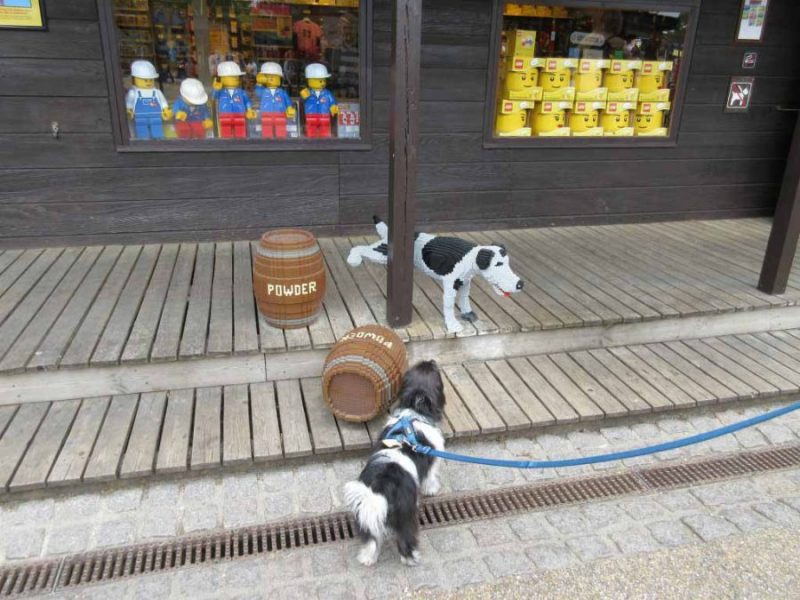
As a conclusion to this collection of stories, here’s a group photo of The Brickworms in LEGO® format:
![]()

